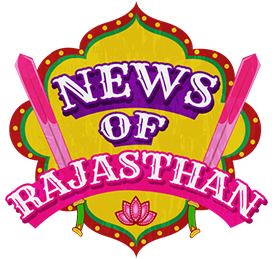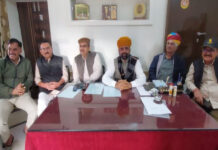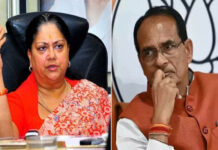
When the entire world is very concerned towards the rising under-5 mortality rate, Rajasthan has been successful in achieving major drops in the area. Since 1990, the world has been trying hard to cut down both the number of child deaths by more than one half. The progress, till date, has been remarkable but not sufficient, as it falls short of the Millennium Development Goal 4 (MDG 4) target of a two-thirds reduction in the under-five mortality rate. According to the world’s statistics of UNICEF in 2015, an estimated 5.9 million children under the age of five will still die, equivalent to 11 every minute. This has raised alarms all over the world as the situation underscores that child survival needs to be a continued priority.
In this scenario, the effort of Government of Rajasthan under the productive leadership Chief Minister Smt. Vasundhara Raje has achieved major heights in improving child health and providing them facilities so that they can have initial and affordable health benefits, as and when needed. The state of Rajasthan has recorded a remarkable six point decline in under-5 mortality rate from altogether 57 deaths per 1,000 live births in 2013 to only 51 deaths per 1,000 live births in 2014. This is the report from a survey.
The survey details of Sample Registration System (SRS) released in this month, showed that the under-five mortality rate has fallen by five points in rural areas from 63 in 2013 to 58 in 2014. In urban areas, the decline is from 32 in 2013 to 28 in 2014. The all-India figure is 45.
For a state like Rajasthan, a desert state with most of the population is poor in terms of social and health indicators, it is the hard work and dedication of CM Vasundhara Raje that health and education facilities have reached to the far remote areas of the state and thus, resulting in a six-point decline in under-5 mortality rate. Still, the Government is not completely done with its responsibility as neo-natal mortality (0-28 days), which is stagnant at 32.
Mr. Naveen Jain, MD of National Health Mission said, “The decline was a significant achievement and due to various interventions by the government over the years. Efforts towards community mobilization, raising awareness of people, increasing institutional deliveries, expanding immunization, free medicines, and free ambulance services have all made an impact.”
Dr. VK Mathur, Director of Reproductive and Child Health, said, “The main reasons for deaths in children were low birth weight, diarrhea, pneumonia, malnutrition. We are focusing on tackling these. We are strengthening facilities for newborn care at various levels which has helped prevent deaths.”
CM Vasundhara Raje Government focused on curbing the infant mortality rate by opening 1,655 New Born Care Corners all across the state as delivery points to provide essential and significant resuscitation services along with 255 New Born Stabilisation Units at Community Health Centres to provide primary treatment to mothers and infants.
According to the officials, critical care was provided at the 36 Special New Born Care Units set up in district hospitals, which is a great step towards the infant care. Poonam Shrivastava, a child health consultant explains that ASHA network has also played a vital role in keeping a check on infant mortality as well as maternal deaths during delivery. ASHAs are those trained health activists who are working in villages to create awareness on health and hygiene, monitor pregnant women and the newborn children and refer them in a case of any health issues, in the time of need. There are more than 47,000 ASHAs across the state.
Dr. Manoj Arora, project director of Child Health claims that Government is working in an organized phased manner to significantly improve the result output. “In the first phase, 9,640 children suffering from severe acute malnourishment in 13 districts were given two months’ intensive treatment and four months’ follow-up monitoring,” said Arora, “the next phase will see treatment for another 15,000 children covering 20 districts.”
Hard work always pays and results says it all. The tough grind of Rajasthan Government is not over and still there is a lot to do as people only expect from them and not Congress party. Their rule in Rajasthan was nothing more than plutocracy whereas the officials under CM Vasundhara Raje work with eutaxy, so many great things are expected from this constructive phalanx of leaders of ruling party.









